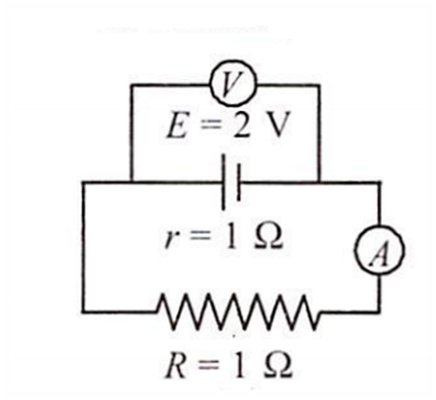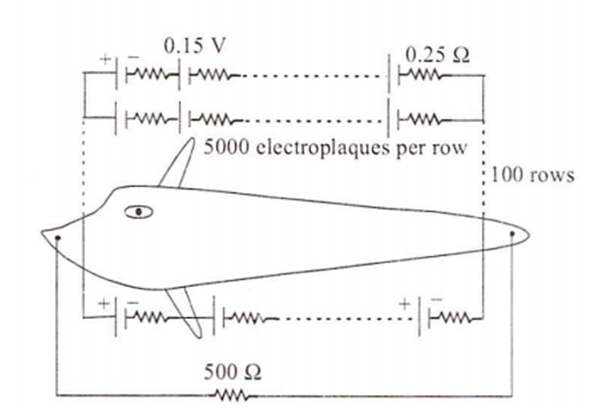 Multiple Choice Questions
Multiple Choice QuestionsAssertion: In the following circuit, emf is 2 V and internal resistance of the cell is I Ω and R= 1 Ω, then reading of the voltmeter is 1 V.

Reason: V = E IR where E = 2V, I = 2/2 = 1A
If both assertion and reason are true and reason is the correct explanation of assertion
If both assertion and reason are true but reason is not the correct explanation of assertion
If assertion is true but reason is false
If both assertion and reason are false.
Assertion: A domestic electrical appliance, working on a three pin will continue working even if the top pin is removed.
Reason: The third pin is used only as a safety device.
If both assertion and reason are true and reason is the correct explanation of assertion
If both assertion and reason are true but reason is not the correct explanation of assertion
If assertion is true but reason is false
If both assertion and reason are false.
A.
If both assertion and reason are true and reason is the correct explanation of assertion
A domestic electrical appliance, working on a three pin will continue working even if the top pin is removed will work because the top pin is for instrument's body earthing. The third pin is used only as a safety device.
Assertion: Ferro magnetic substances become paramagnetic above Curie temperature.
Reason: Domains are destroyed at high temperature.
If both assertion and reason are true and reason is the correct explanation of assertion
If both assertion and reason are true but reason is not the correct explanation of assertion
If assertion is true but reason is false
If both assertion and reason are false
Assertion: Ohm's law is applicable for all conducting elements.
Reason: Ohm's law is a fundamental law.
If both assertion and reason are true and reason is the correct explanation of assertion
If both assertion and reason are true but reason is not the correct explanation of assertion
If assertion is true but reason is false
If both assertion and reason are false
For ensuring dissipation of same energy in all three resistors (R1 , R2 , R3 ) connected as shown in figure, there values must be related as

R1 = R2 = R3
R2 = R3 and R1 = 4 R2
R2 = R3 and R1 = (R2/4)
R1 = R2 + R3
Dimension of electrical resistance is
[ M L2 T-3 A-1 ]
[ M L2 T-3 A-2 ]
[ M L3 T-3 A-2 ]
[ M L-1 T3 A2 ]
Assertion: A body that is a good radiator is also a good absorber of radiation at a given wavelength.
Reason: According to Kirchoff's law the absorptivity of a body is equal to its emissivity at a given wavelength
If both assertion and reason are true and reason is the correct explanation of assertion
If both assertion and reason are true but reason is not the correct explanation of assertion
If assertion is true but reason is false
If both assertion and reason are false
Eels are able to generate current with biological cells called electroplaques. The electroplaques in an eel are arranged in I 00 rows, each row stretching horizontally along the body of the fish containing 5000 electroplaques. The arrangement is suggestively shown below. Each electroplaques has an emf of 0.15 V and internal resistance of 0.25 Ω

The water surrounding the eel completes a circuit between the head and its tail. If the water surrounding it has a resistance of 500 Ω, the current an eel can produce in water is about
1.5 A
3.0 A
15 A
30 A
A wire of length Lis drawn such that its diameter is reduced to half of its original diameter. If the initial resistance of the wire were 10 Ω, its new resistance would be
40 Ω
80 Ω
120 Ω
160 Ω
A rectangular loop carrying a current i1, is situated near a long straight carrying a straight current i2. The wire is parallel to one of the sides of the loop as shown in the figure. Then the current loop will

move away from the wire
move towards the wire
remain stationary
rotate about axis parallel to wire
